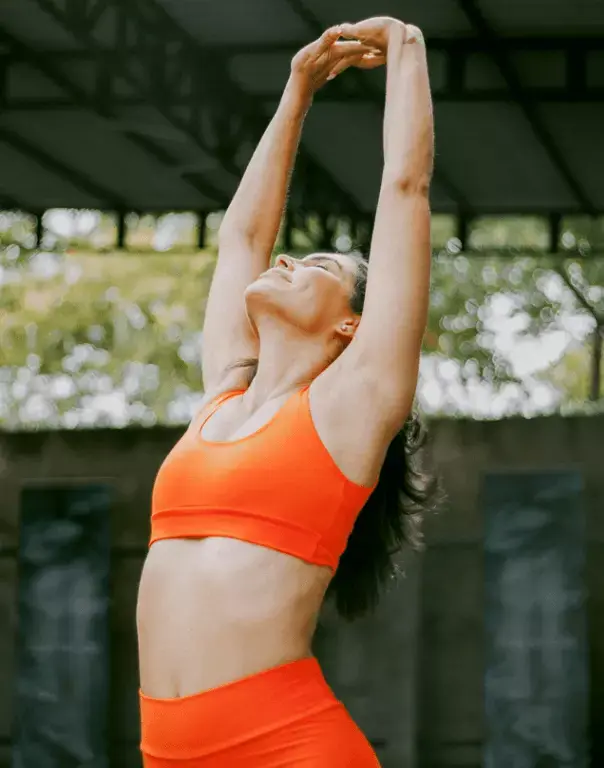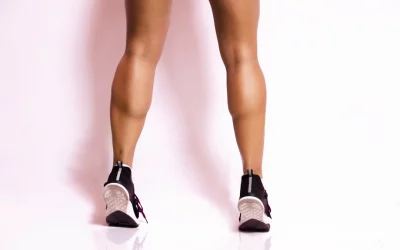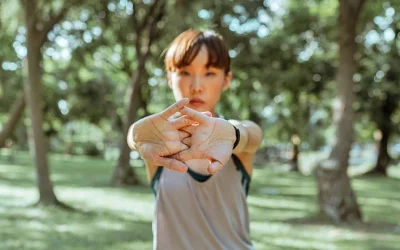Warming up your arms before a workout is important for avoiding injury and optimizing performance. “No pain, no gain!” many people exclaim as they skip or rush through this crucial step. Proper stretching not only prepares your muscles but also increases flexibility and strength. So, what stretches should you be doing before you hit the gym?
This article outlines the essential arm movements and stretches in your warm-up routine to ensure a no-pain workout with maximum benefits!
Importance of Arm Stretches Before Workout
Warming up your arms is essential before starting any workout session. Arm stretches serve multiple functions that contribute to a safer, more effective workout.
First, stretching your arms helps prevent injury by preparing your muscles and joints for the physical activity. When muscles are cold, they are more prone to strains and tears. A proper warm-up increases blood flow to your arm muscles, making them more pliable and ready to handle the demands of your workout.
Another key benefit is increased flexibility, which allows for a better range of motion. You can perform exercises with greater fluidity and precision when your arms are more flexible. This can lead to improved form and reduce the likelihood of overextending or injuring yourself during more intense movements.
Lastly, arm stretches can enhance overall performance during your workout. By loosening up your muscles beforehand, you improve muscle efficiency, enabling your arms to handle more load with less fatigue. This can lead to better endurance and strength during your session, allowing you to maximize your workout.
Best Arm Stretches for a Pain-Free Workout
1. Arm Circles
To effectively warm up your shoulders before a workout, arm circles are an essential dynamic stretch. They are simple to perform and help improve shoulder mobility and flexibility, making them a great way to prepare your upper body for more intense movements.
When performing arm circles, you can move your arms both forward and backward, engaging slightly different muscle groups.
- Forward arm circles activate the front of your shoulders and chest.
- Backward arm circles target the muscles at the back of your shoulders and upper back.
This variation ensures a more complete warm-up, covering a broader range of motion. Additionally, arm circles help activate the shoulders and upper arms, which is important for workouts that involve pushing or pulling movements.
2. Cow Face Pose
The Cow Face Pose is a highly effective stretch that specifically targets the shoulders and triceps—areas that are important to warm up before any workout involving upper body movement. By focusing on these muscles, this pose helps to increase flexibility and improve range of motion, both of which are important for preventing injury during exercise.
To perform the Cow Face Pose, you typically bring one arm over your shoulder and the other arm behind your back, aiming to clasp your hands together. This action deeply stretches the triceps of the raised arm and opens up the shoulder joint, which helps increase mobility and prepares your upper body for more intense activity.
If you’re having trouble reaching your hands behind your back due to limited flexibility, you can use a strap to bridge the gap between your hands. This variation allows you to still benefit from the stretch, even if your range of motion is restricted.
For those looking for a deeper stretch, you can try clasping your hands behind your back without the strap. This more advanced version engages the muscles more intensely and helps further improve flexibility in both the shoulders and triceps.
3. Behind-the-Back Stretch
The Behind-the-Back Stretch is an effective way to relieve tension in your shoulders and arms, especially if you experience tightness in these areas. This stretch is simple to perform and requires no equipment, making it a great addition to your warm-up routine.
To start, stand tall with your feet shoulder-width apart. Reach both arms behind your back and clasp your hands together. If your hands don’t easily meet, you can grasp a towel or band to bridge the gap. Keep your shoulders relaxed and avoid hunching forward.
Once your hands are in place, gently pull them downward, which will deepen the stretch across your chest, shoulders, and the tops of your arms. Make sure to pull only until you feel a comfortable stretch—you should avoid any strain or discomfort. Hold this position for up to 30 seconds, breathing deeply to help your muscles relax further.
This stretch is particularly useful for:
- Alleviating tension in the shoulders, which can build up from sitting or working at a desk.
- Increasing flexibility in the arms, helping them move more freely during your workout.
- Preparing your upper body for more dynamic movements by loosening tight muscles.
4. The Prayer Stretch
The Prayer Stretch is an easy yet effective exercise that targets several important muscle groups in your arms, making it a fantastic choice for your warm-up routine. By focusing on the wrists, forearms, and shoulders, this stretch helps improve flexibility in these regions, preparing them for the demands of a workout.
To perform the Prayer Stretch, bring your palms together in front of your chest, fingers pointing upward, and slowly press your hands downward while keeping them close to your body. This motion stretches the muscles and tendons in your wrists and forearms while also providing a gentle stretch for your shoulders. Improved flexibility in these areas helps reduce the risk of strain, especially when engaging in exercises that involve gripping, pushing, or lifting motions.
For those looking for a deeper stretch, the Reverse Prayer Stretch can be a beneficial progression. In this variation, you bring your palms together behind your back, which engages the same areas as the traditional version but with a more intense stretch, particularly in the chest and shoulders. If you’ve already developed flexibility in your upper body, this progression could help maximize your stretch potential.
You can also complement the Prayer Stretch by adding wrist rotations. After performing the stretch, rotate your wrists in both directions to further improve wrist mobility, which is especially important for exercises like push-ups or weightlifting. These rotations help maintain joint health and prevent wrist strain during your workout.
5. Side Plank
The Side Plank is a dynamic movement that not only activates your arms and shoulders but also engages your core muscles. This stretch is particularly effective as a warm-up because it prepares multiple muscle groups for the more intense exercises to come. It’s both a stretch and a strength exercise, making it versatile for pre-workout routines.
There are two variations of the Side Plank: the modified version and the full version. If you are new to this exercise or lack stability, the modified side plank allows you to keep one knee on the ground, offering additional support. This version still activates your arms and shoulders but puts less strain on your core. In contrast, the full side plank requires you to balance on your feet and one hand, fully engaging your core for stability. This version is more challenging and provides a more comprehensive activation of your muscles.
When you hold the side plank, you’ll feel the supporting arm, shoulder, and core muscles working to keep your body aligned. This is important for warming up these areas, as it prepares your shoulders and arms for the demands of heavier resistance or dynamic movements during your workout.
6. Chest Opener Stretch
The Chest Opener Stretch is an excellent way to loosen up your chest and shoulders, two key areas that directly affect your arm mobility. When you have tightness in these muscles, it restricts your ability to perform exercises that require a full range of motion, such as push-ups or overhead presses. By incorporating this stretch into your warm-up routine, you’ll increase flexibility and help your upper body move more freely during your workout.
To perform the Chest Opener Stretch, stand upright, interlace your fingers behind your back, and gently lift your arms while opening your chest. This movement stretches the pectoral muscles and the front of your shoulders, areas that often become tight after long periods of sitting or from previous workouts.
There are a few variations you can try to target these muscles in different ways:
- Doorway Stretch: Stand in an open doorway, place your arms on the frame at shoulder height, and step forward to open up your chest.
- Wall Chest Stretch: Place your forearm against a wall at a 90-degree angle and turn your body away from the arm to stretch your chest and shoulder.
These variations can be useful for targeting the chest and shoulder muscles from different angles, ensuring you’re fully prepared for a dynamic workout.
7. Shoulder Rolls
Shoulder rolls are a highly effective exercise for enhancing shoulder joint mobility and alleviating tension in the upper body. By gently rotating the shoulders, you can alleviate tightness commonly felt around the shoulders and neck, which is especially helpful after long periods of sitting or inactivity. Shoulder rolls are accessible for beginners and provide immediate relief.
There are two primary movements in shoulder rolls: forward rolls and backward rolls. Each direction offers unique benefits:
- Forward shoulder rolls help open up the back of your shoulders and neck, which is important for releasing tension in areas that often bear the brunt of poor posture.
- Backward shoulder rolls improve your posture by activating and opening the front of your shoulders and chest, which can help counteract slouching.
Together, both movements work to improve shoulder joint flexibility and create a balanced warm-up for the upper body.
In addition to mobility, shoulder rolls also promote better blood circulation, which is important for preparing your muscles for more dynamic movements.
Whenever I’m lifting weights or engaging in bodyweight exercises, shoulder rolls are an easy way to get my upper body warmed up and ready to perform!
Exercise Smarter with WeStretch: Your All-in-One Stretching Assistant
A consistent full-body stretching routine is essential for improving flexibility, supporting injury prevention, and enhancing overall well-being. Carefully following simple yet effective stretches targeting the hamstrings, hip flexors, back, quads, chest, and shoulders, individuals of any fitness level can reap the benefits.
Regular stretching, with attention to proper form and consistency, can help you move more freely, recover faster, and feel better in everyday activities.
Looking for a way to add some fun to your stretching routine? Check out WeStretch—an app that’s like your own personal stretch coach! With tailored plans, easy-to-follow demos, and progress tracking, it’s got everything you need to keep you limber and on point. Ready to get flexible? Sign up today and let’s get stretching!
FAQ
Why is it important to stretch my arms before a workout?
Stretching your arms before a workout increases blood flow, enhances flexibility, and reduces injury risk. Try dynamic stretches like arm circles or shoulder rolls to warm up your muscles and improve your range of motion.
What are some effective arm stretches to do before exercising?
The Cow Face Pose, Behind-the-Back Stretch, and Prayer Stretch are great examples of effective arm stretches. If you want a more thorough activation of different muscle groups, the Side Plank is also an excellent dynamic stretch to include.
How long should I hold each arm stretch before my workout?
Hold each arm stretch for up to 30 seconds before your workout. If you feel any pain, stop the stretch immediately to prevent strain or muscle tears.
Can arm stretches help prevent injuries during workouts?
Yes, arm stretches can help prevent injuries by improving flexibility and range of motion. Incorporate dynamic stretches like arm circles before workouts, and static stretches such as triceps and shoulder stretches afterward to maintain muscle health and reduce injury risk.
Should I stretch my arms differently for different types of workouts?
Yes, stretch your arms differently based on your workout. For weightlifting, focus on dynamic stretches like arm circles. For yoga, use static stretches such as the cross-body arm stretch. For cardio, try dynamic movements like swinging your arms to enhance circulation and flexibility.






